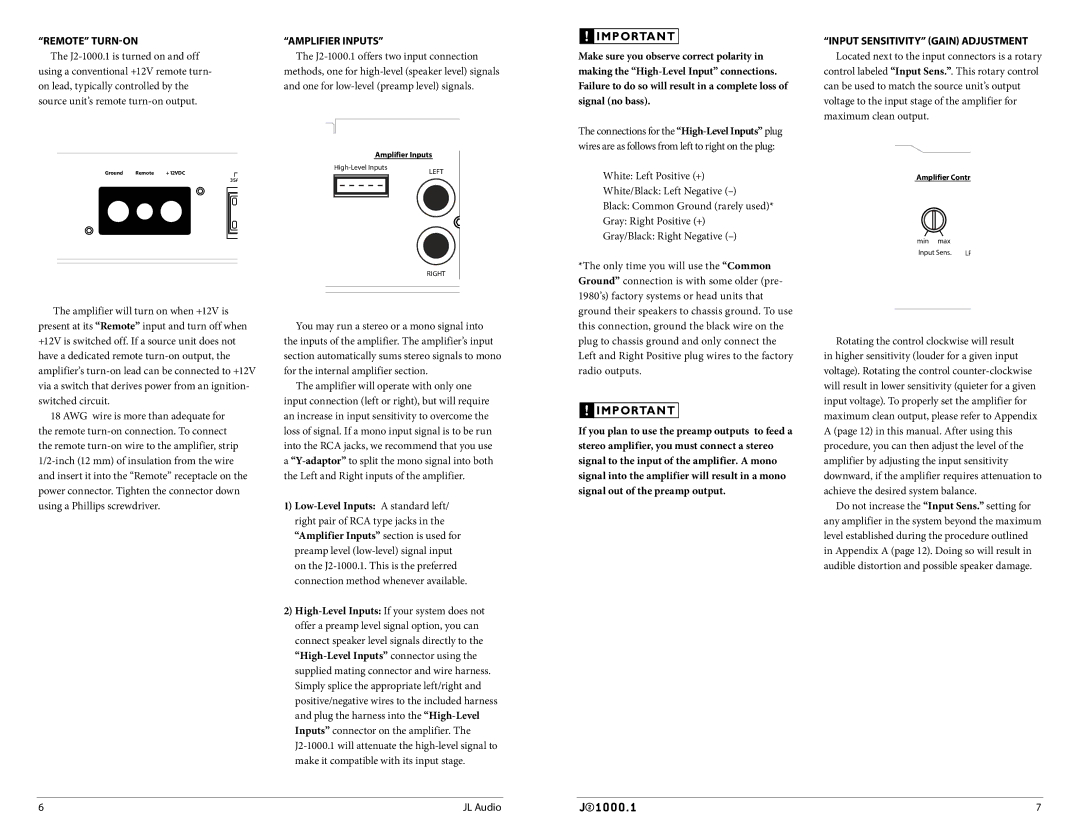
“REMote” turn-On
The
Ground | Remote | + ��VDC |
35A
The amplifier will turn on when +12V is
present at its “Remote” input and turn off when
+12V is switched off. If a source unit does not
have a dedicated remote
18 AWG wire is more than adequate for the remote
“AMPLIFIER InputS”
The
Amplifier Inputs
LEFT | |
|
RIGHT
You may run a stereo or a mono signal into the inputs of the amplifier. The amplifier’s input section automatically sums stereo signals to mono for the internal amplifier section.
The amplifier will operate with only one input connection (left or right), but will require an increase in input sensitivity to overcome the loss of signal. If a mono input signal is to be run into the RCA jacks, we recommend that you use a
1)
2)
!![]() IMPORTANT
IMPORTANT
Make sure you observe correct polarity in making the
The connections for the
White: Left Positive (+)
White/Black: Left Negative
Black: Common Ground (rarely used)*
Gray: Right Positive (+)
Gray/Black: Right Negative
*The only time you will use the “Common Ground” connection is with some older (pre- 1980’s) factory systems or head units that ground their speakers to chassis ground. To use this connection, ground the black wire on the plug to chassis ground and only connect the Left and Right Positive plug wires to the factory radio outputs.
!![]() IMPORTANT
IMPORTANT
If you plan to use the preamp outputs to feed a stereo amplifier, you must connect a stereo signal to the input of the amplifier. A mono signal into the amplifier will result in a mono signal out of the preamp output.
“INPUT SENSITIVITY” (GAIN) ADJUSTMENT Located next to the input connectors is a rotary
control labeled “Input Sens.”. This rotary control can be used to match the source unit’s output voltage to the input stage of the amplifier for maximum clean output.
Amplifier Contr
min max
Input Sens. LP
Rotating the control clockwise will result in higher sensitivity (louder for a given input voltage). Rotating the control
Do not increase the “Input Sens.” setting for any amplifier in the system beyond the maximum level established during the procedure outlined in Appendix A (page 12). Doing so will result in audible distortion and possible speaker damage.
6 | JL Audio | 7 |
